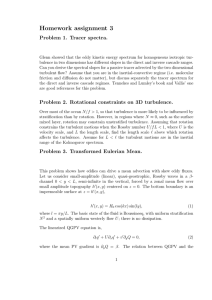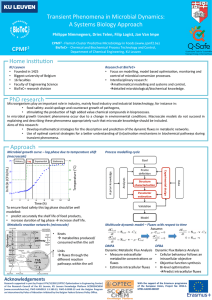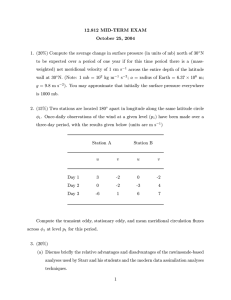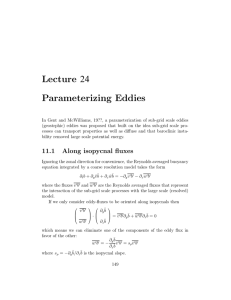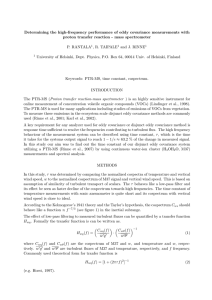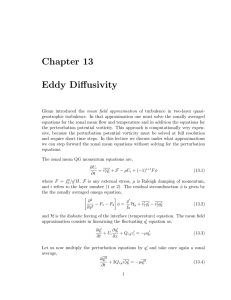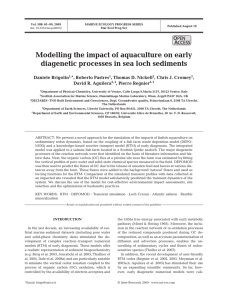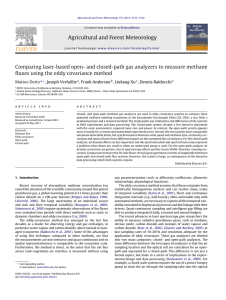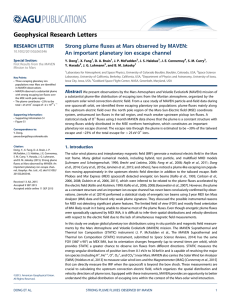Final homework assignment
advertisement
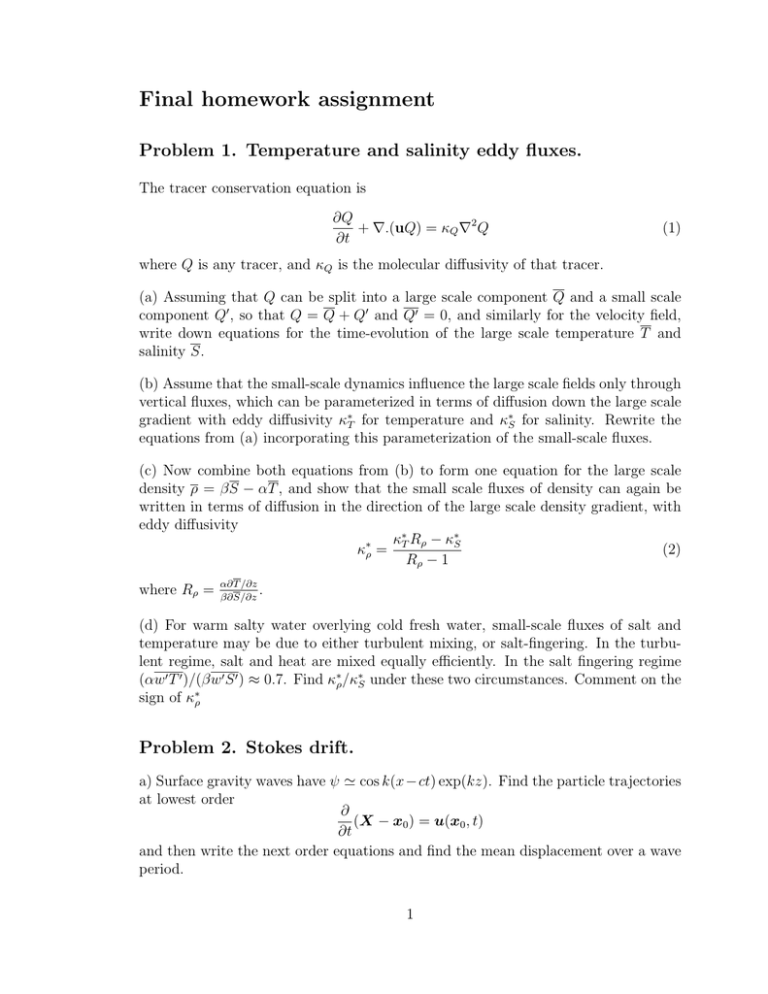
Final homework assignment Problem 1. Temperature and salinity eddy fluxes. The tracer conservation equation is ∂Q + �.(uQ) = κQ �2 Q ∂t (1) where Q is any tracer, and κQ is the molecular diffusivity of that tracer. (a) Assuming that Q can be split into a large scale component Q and a small scale component Q� , so that Q = Q + Q� and Q� = 0, and similarly for the velocity field, write down equations for the time-evolution of the large scale temperature T and salinity S. (b) Assume that the small-scale dynamics influence the large scale fields only through vertical fluxes, which can be parameterized in terms of diffusion down the large scale gradient with eddy diffusivity κ∗T for temperature and κ∗S for salinity. Rewrite the equations from (a) incorporating this parameterization of the small-scale fluxes. (c) Now combine both equations from (b) to form one equation for the large scale density ρ = βS − αT , and show that the small scale fluxes of density can again be written in terms of diffusion in the direction of the large scale density gradient, with eddy diffusivity κ∗ Rρ − κ∗S κ∗ρ = T (2) Rρ − 1 where Rρ = α∂T /∂z . β∂S/∂z (d) For warm salty water overlying cold fresh water, small-scale fluxes of salt and temperature may be due to either turbulent mixing, or salt-fingering. In the turbu­ lent regime, salt and heat are mixed equally efficiently. In the salt fingering regime (αw� T � )/(βw� S � ) ≈ 0.7. Find κ∗ρ /κ∗S under these two circumstances. Comment on the sign of κ∗ρ Problem 2. Stokes drift. a) Surface gravity waves have ψ � cos k(x−ct) exp(kz). Find the particle trajectories at lowest order ∂ (X − x0 ) = u(x0 , t) ∂t and then write the next order equations and find the mean displacement over a wave period. 1 b) Suppose the particle is constrained to a fixed depth z0 . What is its drift then? What if it’s a fixed distance below the free surface? 2
